Vintage Linens can still be found – in grandmas linen cupboard and in second-hand stores. Learn how to identify and use vintage linen in your cozy home.
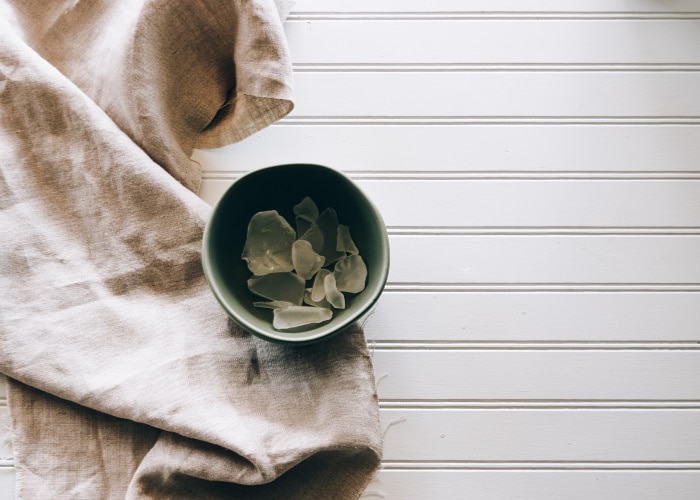
Years ago we began using cloth instead of paper for our napkin and kitchen needs. At the time it was a necessity to save money, but now we do it to save the strain paper goods puts on the environment and because we enjoy it. We believe it makes our house more natural and a cozier home.
You may be tempted to purchase polyester napkins to accomplish this in your home, but think again. You should never buy napkins made of polyester. Polyester is a manmade fiber, made from petrochemicals. You don’t want that near your face. Furthermore, being a petrochemical, polyester attracts oils like a magnet, creating a permanent stain. After a while, those napkins will be impossible to wash clean.
Just like a microfiber cloth, polyester is an electro-static magnet. Put them through the dryer and they will attract every piece of lint, wool, hair or grime that you have hanging out in there. Another drawback – polyester napkins are not at all absorbent. If you received napkins made of 100% polyester as a gift (or you purchased them by mistake), you can still use them as a microfiber cloth in your “Swifter-type” dust mop. As I said, it will attract dust, lint, and grease like a magnet. You can wash it and reuse it. Polyester won’t wear out.
The good news? Vintage linens can be found at many second-hand stores – for pennies, so keep your eye out for bargains.
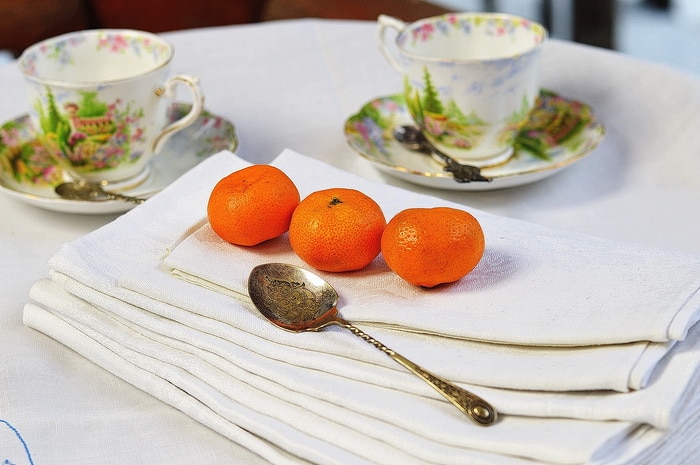
How to identify vintage linens:
I the local second-hand store I found great grandma’s linen closet for real. There were vintage linen napkins and cotton napkins mixed up with gazillions of polyester and manmade fiber napkins. The thrift store had the napkins sorted by color and had them fastened together in sets. This made it really easy to find what I was looking for.
Now vintage linen napkins won’t be marked as such. Lucky for you. If they were marked as “linen” you would pay a whole lot more. So keep this information to yourself, don’t let the thrift shop know you are on a quest, and they won’t know the treasures that they have lurking in the “Vintage Linens”.
You will have to find the linen napkins by feel. Linen feels different than any other fiber. Read the article How reviving Great Grandma’s Linen can save your budget and save some trees, for detailed instruction on the look and feel of vintage linen cloth.

Treasure Hunting for Linen Textiles – Where to find Linen Textiles
True linen can still be found in thrift shops, garage sales, and second-hand stores. It’s common to find linen tablecloths and linen napkins in these places among an array of polyester, cotton, ramie, and acrylic textiles. It’s worth the search if you don’t mind the extra care that linen requires.
10 New Uses for Vintage Wool Blankets –
Wool blankets are one of the main items I look for at garage sales, thrift stores, and antique stores. Textiles are usually pretty inexpensive when you find them used. Wool blankets might have a high price tag, even at a thrift store if they are considered collectible. In this article, we’ll discuss what to look for in wool blankets, how to wash them, and how to protect them from moths.
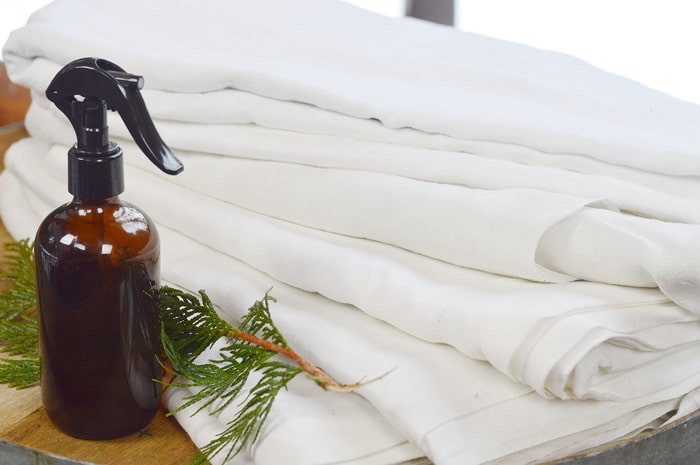
27 Green Uses for Vintage Linens –
Vintage linens are given new purpose through these 27 projects for a greener, more fulfilled lifestyle. There are crafts from vintage linens for every skill level. In this article, I’m not speaking generically about linen to mean any household textile, but rather the specific household textiles made from fibers of the flax plant.
There are two kinds of linen but many weaves of linen. Linen is the exquisite long fibers combed from fiber flax stocks that are put through a tortuous and elaborate process to release their treasured fiber.
Characteristics of Linen Textiles for the new collector
Be sure you are getting the real thing! There are other natural fibers that you might mistake for linen. Raime (nettle) and hemp both behave very much like linen. Raime and hemp are also bast fibers like linen. If the cloth is woven in plain weave or in a simple balanced twill and is using color as its design feature, it could be Raime, hemp, or flax-tow. Tow is the shorter flax fibers that remain when the longer linen fiber is hackled and combed for spinning. It lacks the sheen and longevity of true linen, and is a coarser weave, with more lint.
Once you’ve touched genuine linen and become accustomed to the feel of linen in your hands, you will have success in identifying vintage linen in thrift shops, garage sales, and antique stores. Give it a try.
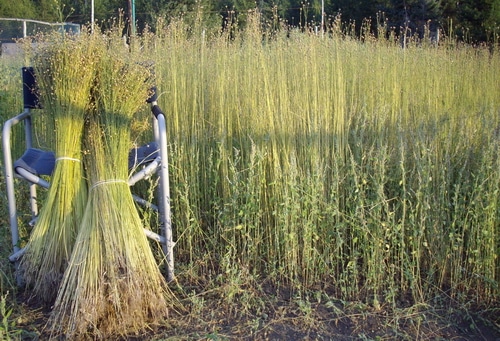
Grow and Harvest Linen Flax
Did you know you can grow your own linen? One of the easiest fibers to grow on your homestead, for clothing and household textiles is linen.
Linen, a specially selected variety of the flax plant, grown for its long, unbranched stocks, is harvested 100 days after planting, and before the seeds are fully ripe. The plants, which are grown for their long, luxurious bast fiber, are pulled up by the roots in order to maximize the length of the fiber.
Finishing Hand Spun Linen Yarn
This article will show you how to turn homegrown flax into linen yarn. Flax is such an amazing plant! doesn’t require extra fertilizer. It can grow in most climates with at least a one-month growing season and isn’t damaged by light frosts during the growing season, flowering, or seed production.
Linen is self-pollinating and if your plants can finish flowering in your climate zone, you can get a successful linen crop. The seeds will continue to mature even after the plants are harvested. A mere month after harvesting, the stocks can be rippled and you can easily save seed from this year’s crop to plant next year’s field.
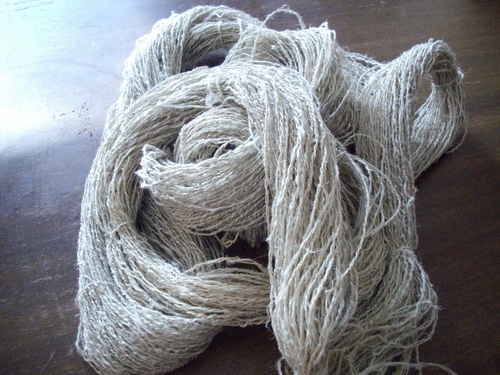
DIY Linen Spray for ironing and freshening your household textiles
Who irons these days? It’s true that ironing is way easier today with our modern, plug into the outlet, steam irons than our great grandmothers had it. With the advent of synthetic fibers, ironing isn’t commonly done today.
I’m not going to convince you that you should start ironing again, but if you happen across a piece of vintage linen and decide you want to enjoy the luxury of a crisp, vintage linen tablecloth on your dining room table, learning to iron it properly may be a skill that you enjoy.
This DIY Linen spray replaces old-fashioned canned starch and is better for the environment.
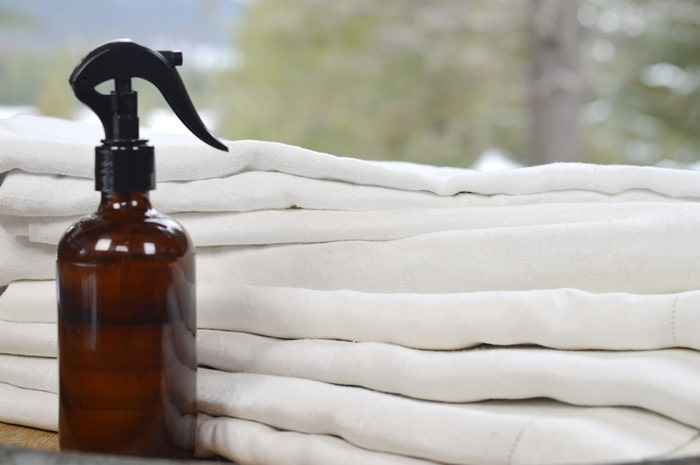
Why should you care about linen?
Linen is a heritage textile. It was grown and processed by hand for 6,000 years of human history. Only in the industrial age, was the process done by machine, and even then, it was the last textile process to be relegated to machine processing.
Ultimately, the best reason is simple – Linen is durable and beautiful.


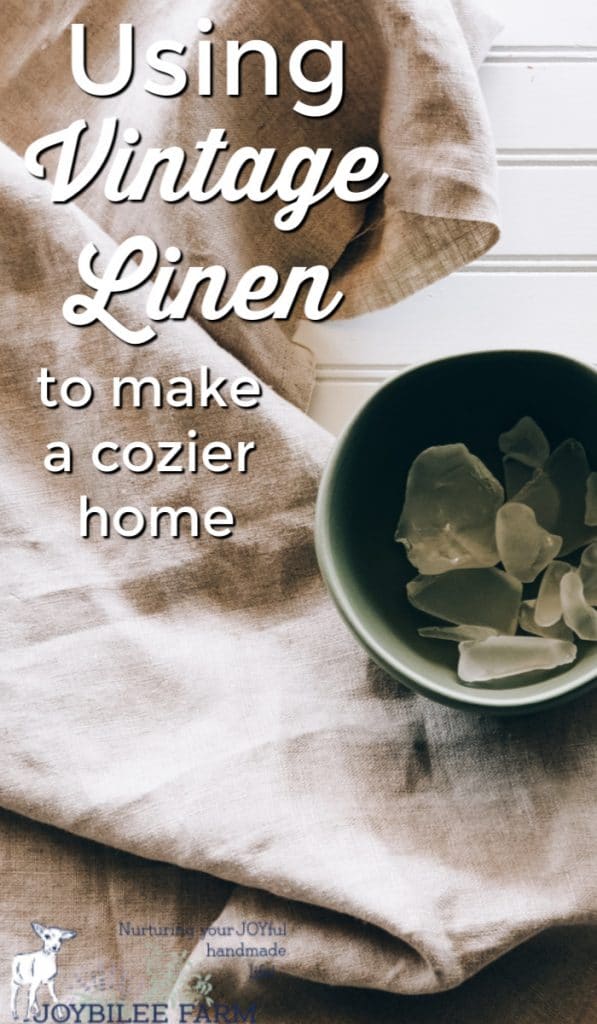

I bought a beautiful dark forest green Eatons Trapper 4 Point Blanket from a local thrift store. Love it